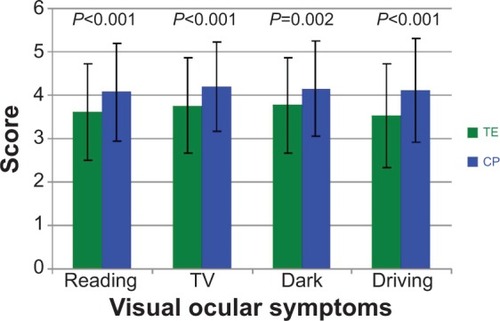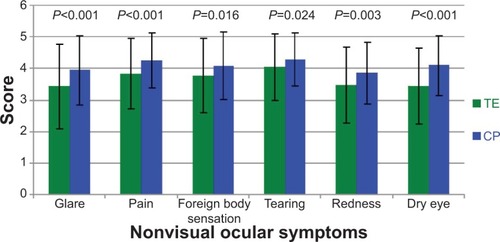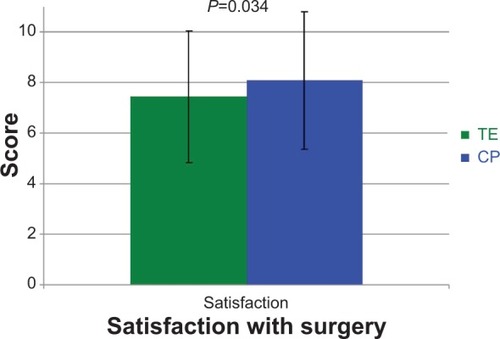Figures & data
Table 1 Questionnaire items
Figure 1 Quality-of-life-questionnaire: visual ocular symptoms.
Abbreviations: CP, canaloplasty; TE, trabeculectomy; TV, television.

Figure 2 Quality-of-life-questionnaire: nonvisual ocular symptoms.
Abbreviations: CP, canaloplasty; TE, trabeculectomy.

Figure 3 Quality-of-life-questionnaire: patient satisfaction with the results of surgery.
Abbreviations: CP, canaloplasty; TE, trabeculectomy.

Table 2 Quality of life outcomes
